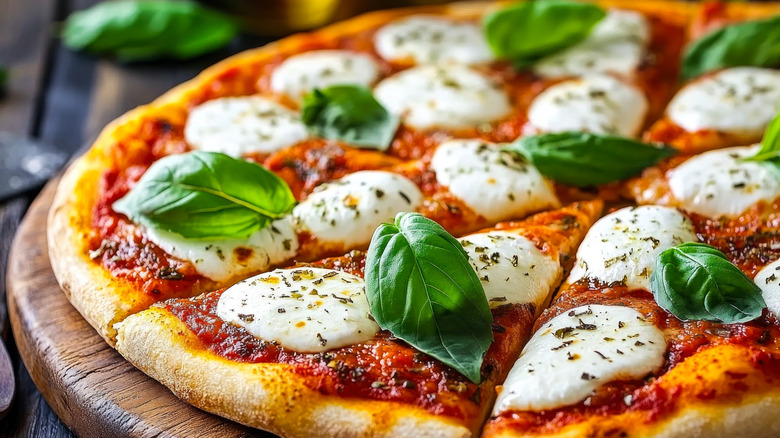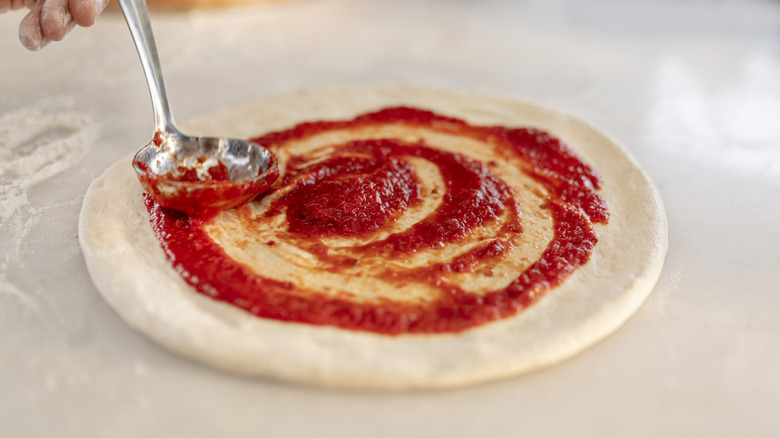Why Is Pizza Round? The History Behind The Classic Circular Food
While not always circular, pizza is most often a round dough topped with sauce, cheese, vegetables, and meat. Historical evidence suggests that this choice in shape was not arbitrary and reflects pizza's roots going all the way back to the sixth century.
As one of the world's oldest dishes, flatbread has been around for more than 14,000 years. It probably didn't take long for its inventors to realize they could get more flavor and nutrition by adding toppings, but it wasn't until Egypt discovered yeast in 3000 B.C. (and invented its incorporation into dough), that the difference between flatbread and pizza emerged. Romans later began using "trenchers," round pieces of bread, to hold saucy dishes – as plates made of ceramic, wood, or metal were still quite rare for the average population.
Fast forward to 1000 A.D., and we get the first real mention of "pizza." Though no longer a proper trencher, it retained its round shape because, quite simply, round shapes are easier to make by hand than square or rectangular ones when it comes to dough. It also cooks more evenly, doesn't require specialized tools (think of the classic spinning pizza toss), and is easily cut into even, triangular slices. Round dough even has a few mathematical advantages over its square counterparts — sorry to Detroit-style pizza, you just aren't as efficient (though still quite delicious).
Why is a circle good for baking pizza?
While the exact origins of the pizza we know today are still up for debate, one thing remains certain: round is the ideal shape. While lovers of square pizza may contest this, simple math outlines that you get more bang for your buck with this shape — and when you have to crank out multiple pizzas to serve to groups, the first thing you have to think about is space efficiency.
While it may seem odd, if a square and a circle have the same perimeter and circumference, the circle actually has more area. As the diameter of a circle increases, its area increases exponentially, which is why you get more food when you order a large pizza instead of two small ones. Pizza dough also needs a bit of air flow to develop good coloring and texture on their crusts — if there are gaps when packing them into an oven, this only helps. When you combine this with the ease of handling thanks to the crust on a triangular slice, you get a winning combination for both taste and efficiency.
Of course, not every pizza in the world is round. While a 1984 declaration from the Associazione Verace Pizza Napoletana requires authentic Neapolitan pizza to not exceed 13.7 inches in diameter, that hasn't stopped traditionalists (like some Sicilians) and modern providers (like Little Caesars) from baking rectangular pies. The crispy edges and points produced by the shape are beloved by many, and modern baking techniques compensate for any of the shape's shortcomings.


